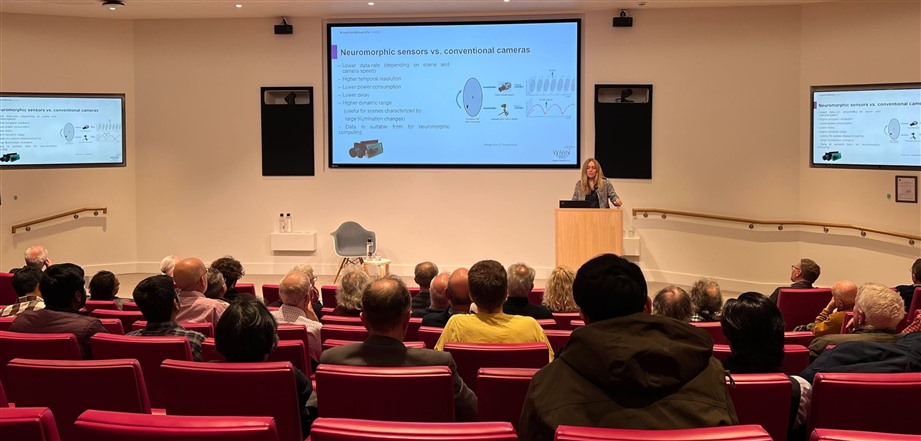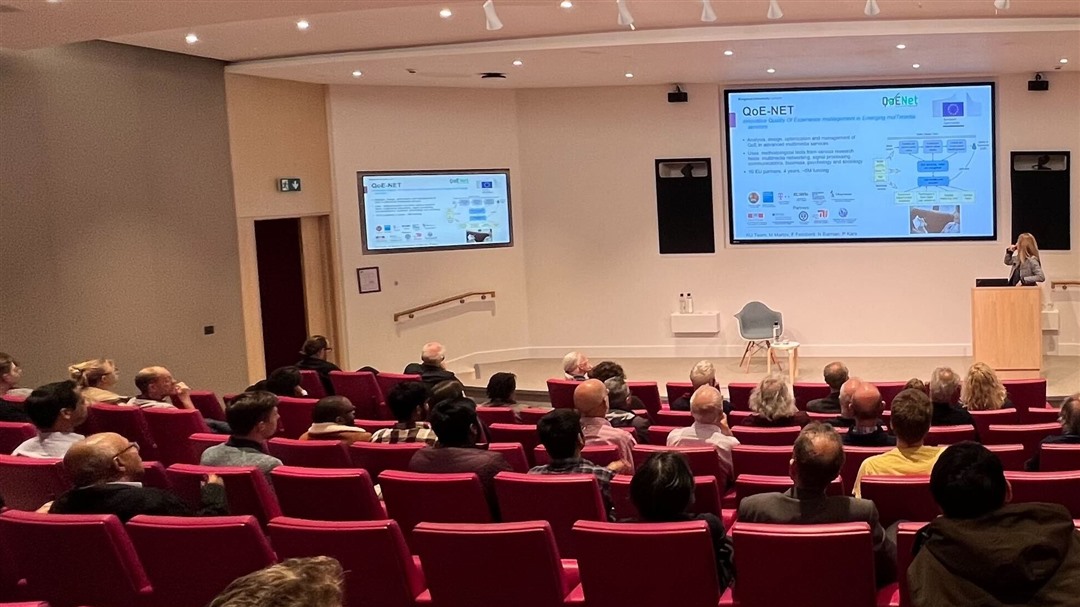I'm assuming that many people in the audience were in the same boat I was at the start of Professor Maria Martini's talk. Expecting a deep talk that started with the hardware replicating the way that the eye and brain see and moving onto the application and display technology that made use of the output from those sensors. Instead our, or at least my, expectation was completely flipped. Not to say that Prof Martini's talk didn't cover the expected topics, but that it dived deep into the unexpected as well.
The talk started off with the a brief history of cameras (camera obscura of Leonardo da Vinci) and moving pictures (Zoopraxiscope of Eadweard Muybridge), then moving quickly into a top level, but quite detailed review of the biology behind human vision. It then jumped quickly into the initial topic of Neuromorphic sensors (the silicon retina part). It was only towards the end of the that the display technology was presented, with Light Field Displays and the camera arrays enabling them being shown. The surprising, and fascinating, middle of the talk covered the data compression required to enable both the neuromorphic cameras and modern display technology to be used effectively over current data networks and measurement of the quality of experience that guides the optimum data compression for various applications.

Unlike standard CCD or CMOS sensors, neuromorphic sensors are able to record at microsecond resolution, but they only encode 4 pieces of data: x; y; time; and polarity, with polarity only being +1 or -1. That's because neuromorphic sensors only record a change in brightness, not the magnitude of the change. Despite the limited data recorded for each pixel, the capture rate is so high that data compression is absolutely essential. The example chosen to demonstrate the necessity and difficulty was traffic modelling. Multiple approaches to data compression were considered including filtering to emphasise object motion, using edge detection, and point-cloud based compression. These were all compared to standard video compression codecs to understand their specific requirements.
Data compression was also brought up later in the talk, by Prof Martini, when presenting on the application of novel display technology. Emergency healthcare and pre-hospital diagnostics (during patient transport to the hospital) do not provide for high data transmission rates. However, ultrasound video can provide information on heart, liver, and kidney function and the presence of internal bleeds. The higher the definition of video provided to MDs in the hospital the better the diagnosis and treatment prior to arriving in the hospital, and preparation at the hospital can be. Another example was the use of endoscopes in 3D surgery and training.

In both examples data compression was not judged purely on a technical basis, but more on a Quality of Experience. This was also the case ultimately for the neuromorphic sensor compression. Effectiveness of compression for each application is judged either by the subjective responses of test participants to the results of the compression or by the ability of algorithms processing the data to control automated cars or UAVs, for example. If the compressed data that's presented is either too low quality or processed too slowly for automated vehicles to identify and avoid objects, then the compression is ineffective. Likewise, if the ultrasound video, for example, is, likewise too low quality, then insufficient information may be presented to MDs for a diagnosis to be made. However the latter example was also influenced by the experience of the doctor. The more experienced, the less detail was needed for an accurate diagnosis to be made. Therefore data compression for video display is far more subjective and requires a more complex setup that replicates the expected environment in order for a realistic assessment to be made.
Ultimately Prof. Martini's talk went off in unexpected, but fascinating and logical directions. The subsequent Q&A session proved that the audience had also found much of it interesting too, with many questions relating the image and video compression to audio compression and the influence of other senses on the subjective experience testing. They also dived back into the initial presentation of the physiology of vision and deeper into the metrics used to derive the quality of experience, demonstrating that, while it covered a lot of topics that the post talk networking showed had been new for most of us, it provoked a lot of thought.